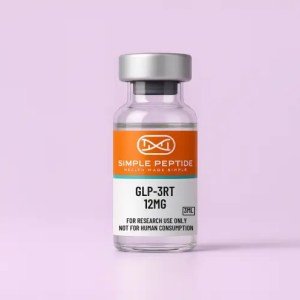Comparing Retatrutide to Other Peptide Therapies for Weight Loss
Regarding weight loss, peptide therapies have become a major focus in the research community. These treatments use small chains of amino acids to influence hormones that regulate appetite, metabolism, and fat storage. Among the latest developments, new peptides are showing even greater promise for helping people manage obesity and related metabolic conditions.
One of the most talked-about breakthroughs is Retatrutide, which is being compared closely to other well-known peptide therapies. In recent studies, higher doses such as the Retatrutide 20mg injection have drawn attention for their potential to deliver even more significant results.
What Is Retatrutide and How Does It Work?
Retatrutide is a new peptide therapy designed to help with obesity and metabolic disorders. What sets it apart is its ability to activate not just one but three hormone receptors: GLP-1, GIP, and glucagon. By targeting all three, Retatrutide aims to deliver stronger weight loss results and better blood sugar control than older therapies that focus on just one or two hormones.
- GLP-1 receptor: Reduces appetite and slows digestion, helping people feel full longer.
- GIP receptor: Helps lower blood sugar after meals and improves fat metabolism.
- Glucagon receptor: Promotes fat burning and increases energy use.
This triple action makes Retatrutide unique among peptide therapies.
How Does Retatrutide Compare to Other Peptide Therapies?
Let’s look at how Retatrutide stacks up against other popular peptide therapies for weight loss:
Semaglutide
- Mechanism: Activates only the GLP-1 receptor.
- Weight loss: Clinical trials show up to 14% body weight reduction over 15 months.
- Other benefits: Helps control blood sugar and reduces appetite.
- Limitations: Does not target GIP or glucagon pathways, so metabolic effects may be less comprehensive.
Tirzepatide
- Mechanism: Dual agonist, activating both GLP-1 and GIP receptors.
- Weight loss: Clinical studies report up to 20% body weight reduction.
- Other benefits: Improves blood sugar control and appetite suppression.
- Limitations: Does not activate the glucagon receptor, so may offer less fat-burning potential compared to Retatrutide.
Other Peptides (Ipamorelin, Sermorelin, CJC 1295, Tesamorelin)
- Mechanism: It stimulates growth hormone release, boosting metabolism and muscle growth.
- Weight loss: The effects are generally more modest and indirect. It is often used for muscle building or specific medical conditions.
- Limitations: Do not target appetite or fat metabolism pathways like GLP-1, GIP, or glucagon.
Key Benefits of Retatrutide
Clinical trials have shown that Retatrutide 20mg injection offers several important benefits over other peptide therapies:
- Superior Weight Loss: In recent studies, participants lost up to 24.2% of their body weight after 48 weeks on the highest dose of Retatrutide. This outperforms semaglutide (14%) and tirzepatide (20%) in similar timeframes.
- Improved Metabolic Health: Retatrutide helps with weight loss and improves blood sugar control, reduces insulin resistance, and lowers cholesterol and triglyceride levels.
- Enhanced Appetite Control: By acting on multiple pathways, Retatrutide helps people feel fuller for longer and reduces overall calorie intake.
- Liver and Cardiovascular Benefits: Studies show significant reductions in liver fat and improvements in blood pressure and cholesterol, which are important for long-term health.
- Convenient Dosing: Retatrutide is given as a weekly injection, with a half-life of about six days, making it easier to use than daily medications.
Safety and Side Effects
- Comparable Safety Profile: The most common side effects of Retatrutide are gastrointestinal, like nausea and diarrhea, which are similar to those seen with other GLP-1-based therapies.
- No Major Safety Signals: So far, studies have not shown any serious safety concerns or liver toxicity, even in people with fatty liver disease.
- Tolerability: Most side effects occur during the first few weeks as the dose increases, and they usually become milder over time.
Retatrutide vs. Semaglutide: Key Differences
When comparing Retatrutide and Semaglutide, several important differences stand out. Here’s a closer look at how these two peptides differ:
Number of Targets:
Retatrutide acts on three receptors (GLP-1, GIP, and glucagon), while Semaglutide targets only the GLP-1 receptor.
Weight Loss Outcomes:
In clinical studies, retitatrutide has shown a higher weight loss in comparison to Semaglutide.
Metabolic Benefits:
Retatrutide’s triple action may lead to greater improvements in blood sugar, cholesterol, and liver fat. Semaglutide is effective for blood sugar control but may not impact fat metabolism as strongly.
Fat Burning:
Retatrutide’s activation of the glucagon receptor is believed to increase fat burning, a feature not present in Semaglutide.
Appetite Suppression:
Both peptides suppress appetite, but Retatrutide’s multi-receptor approach may offer longer-lasting fullness.
Side Effects:
Both have similar gastrointestinal side effects, such as nausea and diarrhea.
Dosing:
Both are administered as weekly injections, making them convenient for ongoing use.
Potential for Broader Health Benefits:
Retatrutide may benefit liver health and cardiovascular risk factors due to its broader mechanism.
Conclusion
Peptide therapies continue to advance the science of weight loss and metabolic health. Retatrutide stands out for its triple-action approach, which may offer greater weight loss and broader health benefits than older treatments like Semaglutide. Its ability to target multiple hormone pathways could make it a valuable tool for researchers studying obesity and related conditions.
For research supply companies such as Simple Peptide, these developments open up new opportunities to support the scientific community. They explore various innovative peptide-based solutions to help scientists study if they can help with weight management and metabolic health.


